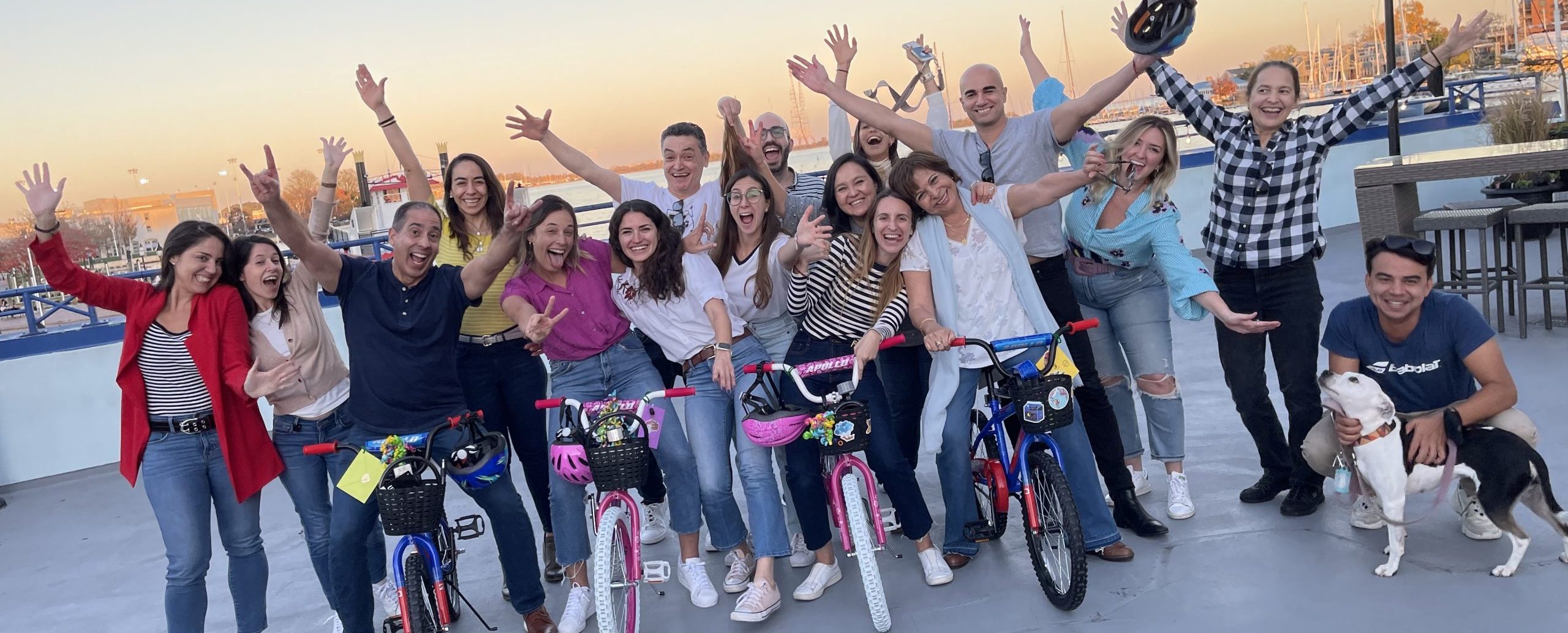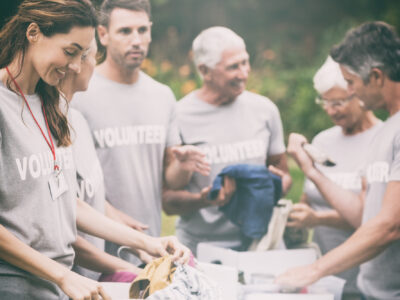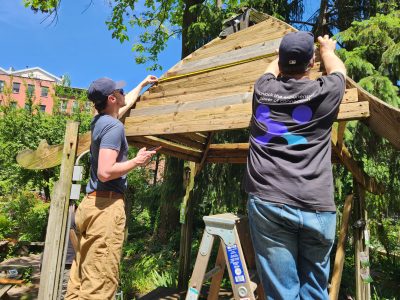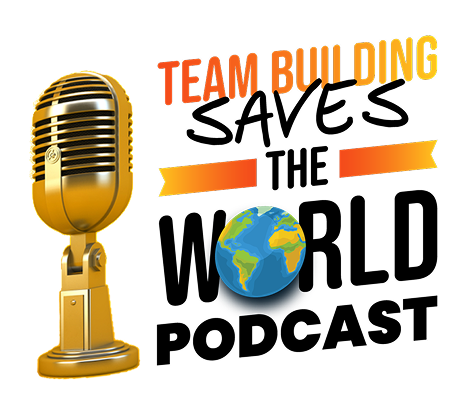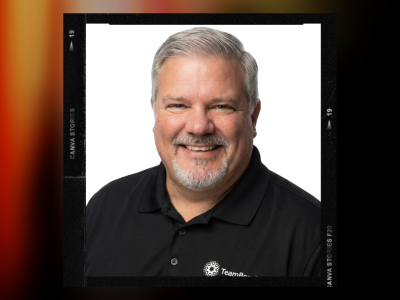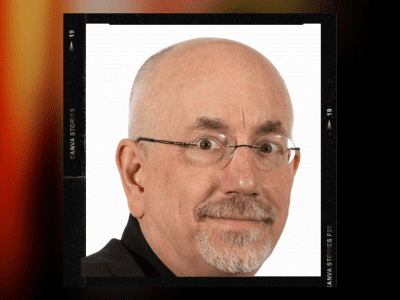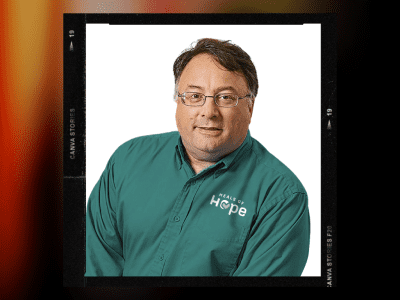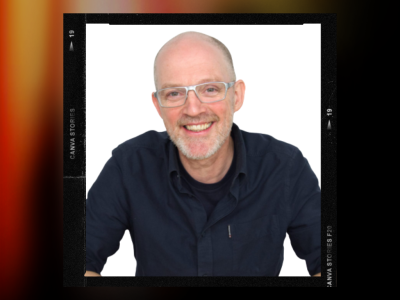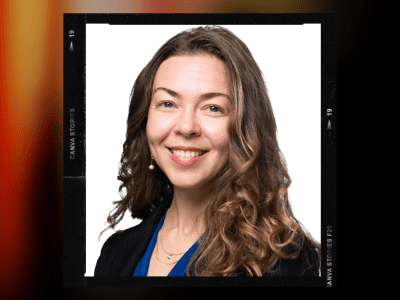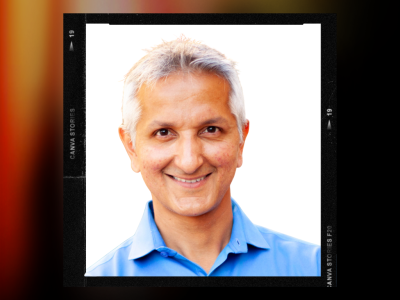STRONG TEAMS DON’T HAPPEN BY CHANCE 
Leading With Trust
w/ Melissa Richards
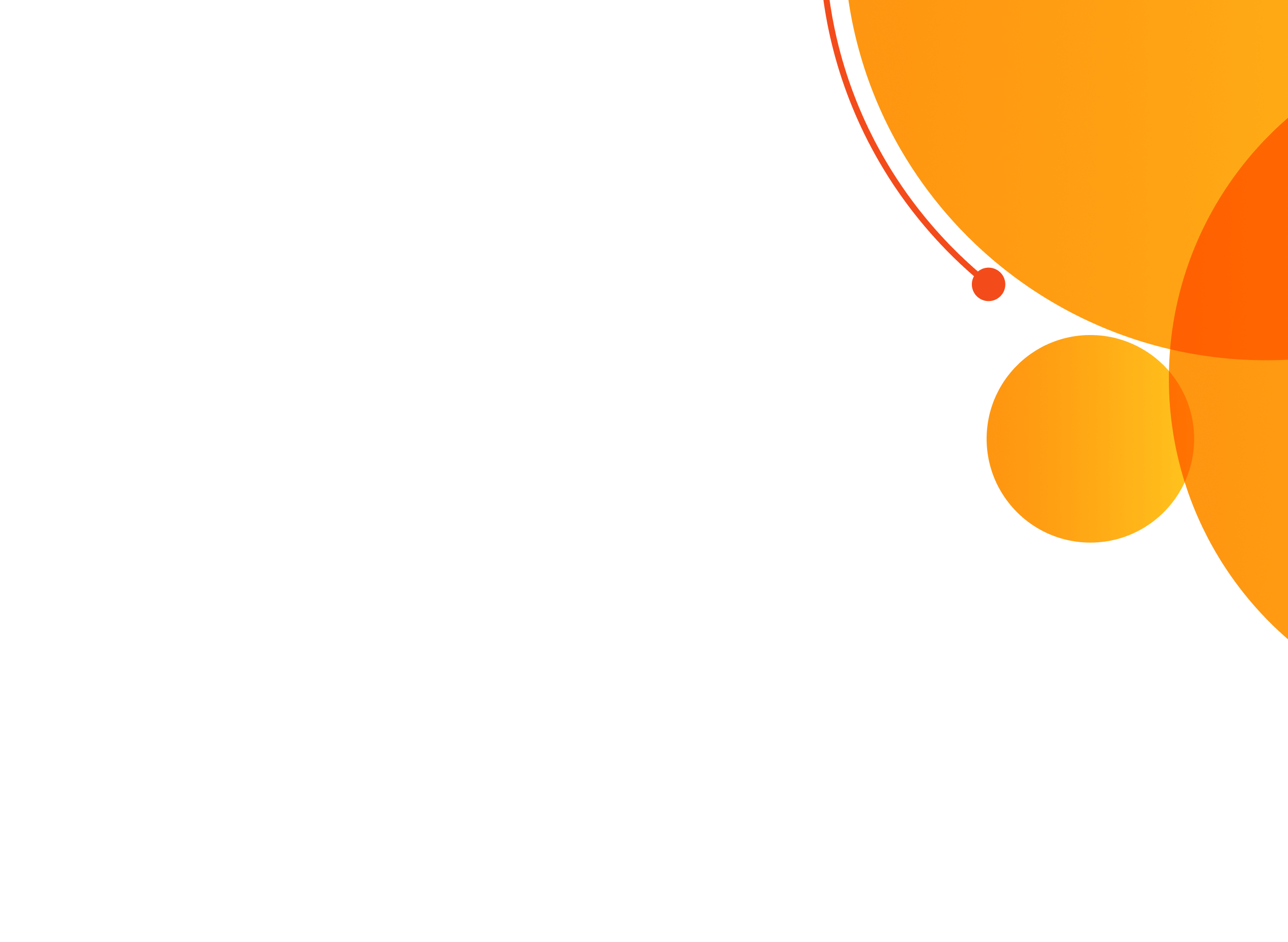
Use the buttons above to listen now.
Transcript - Leading With Trust
Rich Rininsland: On this episode of Team Building Saves the World.
Melissa Richards: I’m the checklist guru. I love checklists I created. ’cause I believe that people are, are the center of everything we do. Sometimes there’s a messy middle. There’s chaos in creativity. Very important question. This is really important to me. It’s become more important the older I get.
Rich Rininsland: So you’re telling me your checklist has checklists.
Melissa Richards: My checklist is checklisted. Yes.
Rich Rininsland: Hello, team. It’s me. Your old friend, Rich Rininsland, host of Team Building Saves the World and you can trust me on that. Speaking of trust, on today’s episode, we’re talking about boosting trust and leadership with the speaker, leadership coach and author of The 30-60-90 Day Handbook: Checklists for Communications and Marketing Leaders in Higher Education, Melissa Farmer Richards. But before we do, I have to share some love with all of my supporters at TeamBonding. If your team is ready to experience teamwork through the Power of Play then visit TeamBonding.com to learn more. now, team, join me in welcoming to the show the leadership Guru TM herself, Melissa Farmer Richards, Melissa.
Thank you so much for coming on. Uh, my team out there meet Melissa Farmer Richards. I wanna introduce you to them, uh, like we normally do. What made you begin this way? What made you take leadership training to like this point in your life?
Melissa Richards: So thanks, Rich. It’s really an honor to be here. Thank you. And to be invited to be on your podcast.
Um, I spent the first 15 years of my career in corporate, specifically managing corporate communications, marketing and strategic alliances in the technology industry.
Rich Rininsland: Okay.
Melissa Richards: And then I pivoted to higher education where I managed communications, marketing and um, enrollment, um, for colleges and universities.
And about a year and a half ago, I decided that I was at a point in my career where, um, I really wanted to lift up others. Hmm. Um, I was feeling that there’s a. A potential leadership crisis happening in higher education, not only at the top level, but in middle management as well. Right. Okay. People are burning out and they are leaving higher education, which I find is really troubling for me.
I’m still very passionate about higher education. It changed my life as a first generation college students, so, um, I really set out to help develop the future leaders. Current and future leaders. Um, I’ve been focusing on the higher education space, but also have some clients in the corporate space as well.
Um, I facilitate team workshops. I facilitate team communication building, so building out communication norms and helping teams function by communicating well with one another. And also I deliver individual and group leadership coaching
Rich Rininsland: and. You’re a published author, your most recent book, the 30-60-90 Day Handbook, has that already come out?
Melissa Richards: Yes. Yes. It came out in March. It’s published by the Council for Advancement and Supportive Education, which is one of the largest professional associations supporting higher education fundraisers, uh, alumni professionals. Communications and marketing professionals. So the book is the 30-60-90 Day Handbook: checklist for Communications and Marketing Leaders in Higher Education. And I call myself the checklist guru.
Rich Rininsland: I was about to say, I saw on your LinkedIn page that you had that trademarked.
Melissa Richards: Yes. Yeah. Wonderful. So I’m working on that. Yep. The first, the first step is to file for use, and then you register it as a trademark.
So that’s me.
Rich Rininsland: Very nice. But, um, in your, the research we’ve done on you, uh, we, we’ve read how you identified three fundamentals of leadership: building trust, earning credibility, and demonstrating commitment. Mm-hmm. First off, can you define those for us and what is it that makes them fundamentals of leadership?
Melissa Richards: Certainly. So I, I believe that effective leadership always starts with intentionality, and especially in the first 90 days of a new role. Okay. Um, our resume and our experience get us in the door. I came to higher education, as I mentioned, from the corporate technology industry. I was lucky to get new mentors and sponsors who welcomed me, but I really wish I’d had a handbook, which is why I wrote this book, um, to help leaders feel prepared when they walk in the door.
So those three fundamentals, I find pretty much any leadership trait and characteristic that is important and communication and leadership will fall into those three buckets. So, you know, quick synopsis, building trust starts with relationship building. People trust people. So building relational trust is really important out of the gate, and it takes commitment, compassion, and communication.
Earning credibility is the second one, and earning credibility again, you, you come in with your resume and the experience and the credibility that you earned through the process of right, of getting the job right, right. The interview process, but it’s the actions and evidence that come after that that earn credibility.
Okay. And demonstrating commitment, really, in my own words, means you’re showing that you’re in it to win it. That you’re, you are committed to the job because it’s something bigger than yourself. Mm-hmm. And as a leader, it’s about helping your team members connect purpose to their work. And that includes empowering them and showing appreciation.
Rich Rininsland: And do you find that these things just, ’cause what it sounds like to me as you’re describing it, is that it would just be almost like a steamroll effort that they just feed into each other and help build each other along as you go.
Melissa Richards: Yes, exactly. Okay. ’cause building trust is ongoing. You Yeah. You start with an intentionally trying to build trust, um, by building relationships, but it’s, you’re earning credibility along the way.
Mm-hmm. As you build trust. And then that leads to, once you start. Showing that you are in it for something bigger than yourself and you are connecting purpose to people’s work. Yeah, that’s the demonstrating commitment part. Okay.
Rich Rininsland: And what would you recommend as a good starting point? How do you show the people you know?
’cause you can say whatever you like, especially in that interview process, but once you have hit the ground running, how do you show them that that is the best you? You are making your best start.
Melissa Richards: It starts with empathy, which includes listening. Okay? Listening to others, um, showing respect for the history.
Sometimes as leaders we’re brought in to make change, but that doesn’t mean that we should come in like a bullet in China shop, right? Mm-hmm. We need to understand what the culture of the place, right, and really engage with the people and understand and show respect for the history that came before you, and it’s only after that.
You do that work that you can bring people along with you and change.
Rich Rininsland: Okay. And you break it down into the 30, 60, 90. Mm-hmm. What do those individual time periods, you know, what are the differences you find in them and, and what are the similarities that have to continue throughout?
Melissa Richards: Okay. So yeah, so the three fundamentals of leadership: build trust, earn credibility, demonstrate commitment, and because i’m the checklist guru. I love checklists. I created, um, four steps for each one. So building trust is about being consistent. It’s about evoking empathy and utilizing transparency and communicating well. And that again is you’re, you’re taking the time with individuals to get to know them and building that relational trust that’s so important.
Again, people trust people and you cannot build organizational trust unless you start with relational trust. Earning credibility again, is about engaging others. It’s about taking responsibility. It’s about committing to learning and delivering results. But again, that, you know, that engaging others is, that’s that bridge between building trust and earning credibility.
Mm-hmm. It’s very people centered. Um, this approach that I’ve developed. Okay. Because I believe that people are, are the center of everything we do in an organization. And so finally demonstrating commitment, it’s about being the mission. Living the mission, whether it’s in for a corporate entity, a nonprofit, or a higher edu higher education institution.
It’s living that mission and helping your, your team connect purpose to their work. And it’s about guiding accountability, living, you know, holding yourself accountable, but also guiding your team towards accountability. Mm-hmm. It’s about showing up. Following through on what you say you’re gonna do, and it’s about appreciating your team and giving appreciation.
Rich Rininsland: Okay. You in that mentioned, my absolute favorite buzzword that I listen for, for almost every episode that I’ve done so far in the six years we’ve been doing this podcast, empathy.
Melissa Richards: Mm-hmm.
Rich Rininsland: It seems to be a lot of people’s linchpin ideal, but it seemed, it also seems to be impossible to teach it. Mm-hmm. So can you give me your, because I come from a generation where, and I’ve talked about this with so many people where when I started off in middle managements in the business sectors, you know, umpteen years ago, that empathy product not, or that that empathy motive was, was not only unheard of, it was almost discouraged.
Mm-hmm. That if you wanted to succeed, you kind of had to forget everybody else. To make yourself get a little higher and higher in the, in the marketing. Mm-hmm. So how, how do we teach what is, to me, a really an an ineffable quality?
Melissa Richards: Yeah. So I’ll, let me start by sharing, um, a quick story, please. I, I once had a boss who, um, I was trying to coach him on adding empathy to his communications.
Rich Rininsland: Wow. Okay.
Melissa Richards: And encourage and supporting that. And he told me that he couldn’t write what he didn’t feel.
Rich Rininsland: Okay.
Melissa Richards: Right. Yeah. So that’s, and, and also I think a lot of people feel like it, they may be, they’re managing a lot of chaos. Mm. And they find it difficult, um, to evoke empathy or have compassion when people are complaining or, you know, trying to, to punch holes in things that they don’t understand.
And what’s really important to learn in that is that. Empathy isn’t always natural. Right. But you can be committed through curiosity and through your care for others. Okay. To learning and practicing empathy. Right. It includes practicing active listening. Mm-hmm. It includes engaging in the experiences of others and being.
Being curious to hear their perspective. It doesn’t mean that they’re gonna cha always change your mind or that there’s a right or a wrong or a black and a white, right? There’s, it just means that you are, you’re continuing to learn and you’re committed to learning what you don’t know and, and that includes other people’s perspectives and other people’s.
Experiences that they bring to the table. And for me that’s, that’s the core to leading a people-centered organization and being a people-centered leader.
Rich Rininsland: Fantastic. Okay. Switching gears just a little bit. How do we create a high performing creative team when working with some limited resources?
Melissa Richards: Right. Okay. So high performing creative teams. I am lucky in my leadership to have had managed many high performing creative teams and, and professionals. And I believe that high performers, especially creative professionals, enjoy space for give and take. Okay. And enjoy learning from one another. Okay? And so I, that’s, that is characteristic of a growth mindset and its passion for always wanting to get.
To, to do things better rather than just simply getting the job done, create high performing professionals, especially creative professionals. Mm-hmm. Aim for excellence, and that’s a beautiful thing. But it can also be messy, right? Sometimes there’s a messy middle. Sure. There’s chaos. In creativity. Um, but there’s beauty in the end.
And so because high performing creative professionals aim for that continuous improvement, it, they crave feedback and appreciation. So as leaders, we need to create space for that. Um, I’ve always tried to foster healthy collaboration between team members helping, um, coach them on how to give creative and constructive feedback to one another.
Rich Rininsland: Nice.
Melissa Richards: And create psychologically safe spaces for them to share feedback. Yeah. Um, it also means dedicating time for creative thinking. I. So, um, I remember back, uh, during the pandemic, we were all just, you know, you remember right, how crazy it was. Oh yeah.
We felt like, felt like we were doing 10 jobs on top of managing a global pandemic and worried about our, our own health and that, you know, for creative professionals, we lost the, that. The the one-on-one interactions we were having in the workplace because we were all working from home. And so one of the things that we did as a team is that we set aside a block of time every week.
We put it on the calendar. Sometimes we would get together and have just free form creative discussions. Other times we would use that as individual time for us to just. Think creatively, um, stop what we’re working on. Go out, explore other people’s websites, read magazines, watch videos. I would often send some ideas, you know, some prompts to people, um, for things that they could explore during that time.
But as a. You know, managing high performing creative teams, it’s important as a manager to realize that people need that space and, um, for creating and for thinking,
Rich Rininsland: especially to, to come to realize, I mean, creating itself literally means building something from nothing.
Melissa Richards: Yes.
Rich Rininsland: So, and if you don’t have the freedom to explore in that kind of, that kind of space, that kind of setting, then what are you really gonna get out of it?
Melissa Richards: Exactly.
Rich Rininsland: Okay. But then we’re gonna kind of face the other way where, you know, at some point your team might realize the thing they’re trying to create isn’t going to work. Mm-hmm. At least not the way that they’ve been building towards, um, we always call it that. Fake, fake it till you make it philosophy.
So is that something that they should be given the freedom for or is it something that. Is it something that we need to nip in the bud faster than usual?
Melissa Richards: So I, I see it as a little bit, I mean, fake it till you make it. I wanna be known for destroying that phase, that, that phrase, I, I, I believe you shouldn’t fake it.
You should learn it. Okay. And, um, that rather than just pretending that you know what, you know, what you’re doing mm-hmm. Like be honest with people. And that’s part of, of trust building is being honest about what you know and what you don’t know. I think that that phrase actually evolved because of the stigma that, you know, there’s a stigma associated with acknowledging that you don’t know everything.
Rich Rininsland: Right, right, right.
Melissa Richards: But as, as leaders. We shouldn’t know everything. We should be smart enough to hire people, uh, who have diff, who bring different skill sets to the table. And we have to be okay by saying that, that we’re still learning on the job. And again, that’s how you earn respect and credibility when you’re honest about what you know and what you don’t know.
And so as leaders, we can also instill that in others. We shouldn’t create spaces that make people feel that they’re not good enough and that it’s. It’s, you know. Perfect. Everything has to be perfect. I, I also have a, a high disregard for toxic perfectionism. Right. It’s a, we’re as creators sometimes we’re not always gonna get it.
Right. Yeah. You know, we’re gonna get it wrong sometimes and we need to be okay with that. And creativity is a process. So it’s, it’s a learning process. And we should be learning together as we create beautiful things.
Rich Rininsland: Just when you were saying that, it was, it reminds me of my favorite quote from Bob Ross.
The, uh, the, the learn to paint gentleman. Mm-hmm. It was on PBS for all those years who said, there’s no such thing in art as a mistake. Mm-hmm. There’s just happy accidents. Yes. Now that you love it, put the paint where it’s not supposed to be. What can you make from the paint that you put there? Mm-hmm.
Mm-hmm. But this can often lead to, especially in a business community or a mindset and higher education, I’m certain in as well crises. They’re gonna come. Everybody’s gonna, everybody’s gonna have them. You know, even as I was saying that, that one example of we’re building towards something, oh, but wait, there’s no way we can get where we want to be.
Melissa Richards: Mm-hmm.
Rich Rininsland: How do we know, or how can we even give the freedom to know that we’re heading in that direction before it’s too late? And what can leaders do to make sure that their teams have that freedom of expression?
Melissa Richards: So one of the workshops that I facilitate now in my business is around communication norms.
Okay? So helping, helping teams understand, um, their best. Practices for communicating well with one another.
Rich Rininsland: Okay?
Melissa Richards: And it starts with individual communication preferences, right? So understanding that, um, one person on the team really hates to be interrupted, it throws off their day. So please schedule an appointment with them.
Okay. Um, someone else might be the person who’s bouncing around and they love just popping into people’s offices and, and sharing ideas and that water cooler talk. Other people may prefer email, other people may prefer slack messages. So under it starts with understanding those. Personal communication preferences and then understanding what, how you communicate it as a team.
So how are you using tools to communicate about projects? What do you, what happens when a project starts to go off the rails and it’s, you know, how do you communicate? Early with one another in healthy ways that foster an environment where it’s okay and, um, people aren’t devastated and feel personally responsible.
Um, right. They’re motivated to move the project forward and get it back on track.
Rich Rininsland: Can you gimme an example that you’ve experienced either, and again, you don’t have to share names. I don’t, you don’t need to know who, who you’ve worked with throughout the years. I was looking again at both your website and your, your, uh, LinkedIn, and there’s, the list is mountainous and highly impressive of the people you’ve worked with over the years.
But gimme an example of when you have seen this work and, and how did it look? How did it come across to you?
Melissa Richards: Well, I mean, we can take, we can take the example, go back to the pandemic Sure. As an example of a major crisis that we were all dealing with. So not just Yep. You know, a team project crisis. This was a, a, a major global crisis, um, affecting everyone
Rich Rininsland: and talk about having to learn new ways of communication. My goodness. Yes.
Melissa Richards: Yeah. So the, you know, the three stages of any crisis, um, that I adhere to is readiness, response and recovery. Mm. And the readiness is the, you know, it’s all that preparation you do. Now, none of us were fully. And adequately prepared for a global pandemic. Um, going forward, I hope that we will be, but you know, any communications, uh, manager at an organization should have a, a, at least the initial skeleton of a crisis communications plan Okay.
In place. So that’s the readiness, right? Putting, documenting your workflows and procedures. Having that plan, going through tabletop exercises to prepare for different scenarios, creating your checklist. Mm-hmm. Because when a crisis happens that’s immediate, you wanna be able to pull that out of the drawer.
And that also is important for teams because you wanna have operating procedures as a team so that you can, everyone can go back to one place and know exactly where you are. Um, you know what they should be doing. Everybody wants to help. They wanna know what their role is, okay? So make sure that you have that defined upfront.
And then the response stage, of course is like when the crisis is happening, what, what? How are you responding it to it? Well, right. And of course you should be putting safety and people first, followed by business continuity. And then the third stage is recovery. It’s the immediate crisis may be over.
Mm-hmm. But people are still reeling. Right? This goes back again to people-centered leadership, recognizing that people go through the different stages of a crisis, um, with different emotions at different speeds. And one of, um, I have a, an analogy that I use called the bridge analogy. So as a communicator, whether, no, I mean, regardless of how big or how small the crisis people are gonna be going through those stages.
At different speeds.
Rich Rininsland: True.
Melissa Richards: As a leader, we can’t just run across the bridge. You know, if we’re all on one side of, of a cavern. Mm-hmm. Imagine that we’re all standing on one side of a cavern. There’s a swinging bridge that goes across to the other side. As a leader, we shouldn’t run across the bridge to the other side and then shout back, follow me.
Rich Rininsland: Right, right, right.
Melissa Richards: Like, that’s not an effective way. We have to usher people. Usher people through those stages and using effective communications is a healthy way to do that. So we have to recognize that there are gonna be people who are gonna run across the bridge ahead of us. They’re gonna wanna be people who are gonna go with us.
They’re gonna be people who stop in their tracks halfway across the bridge because they’re terrified, right? And they’re gonna be people who don’t even put a foot on the bridge because they feel that they’re safe where they are, and they’re not going to the other side. So we have to usher people. Across.
And so again, regardless of how big or small the crisis that should be, our focus as leaders is, is ushering people.
Rich Rininsland: It sounds to me like you’re saying almost like back in, in my day, I, I did a lot of, uh, corporate security work. Mm-hmm. Just as an example, out of my own personal history, the, the fire alarm drills that you would have once a month, once every other month, whatever it happened to be for your personal business.
The objective is not only to teach people where they need to go and how they need to get there, and when they can come back in and, you know, to, to look at all, but the doing it over and over and over again.
Melissa Richards: Yes.
Rich Rininsland: Takes the panic out of it.
Melissa Richards: Yes. The repetitive nature.
Rich Rininsland: Yes. Is that something you recommend for leadership?
Melissa Richards: Yes, absolutely. It becomes a, it, as you said, it takes the panic out mm-hmm. Because it becomes second nature to you. Nice. So that’s, you know, it for, for major crises, you’re mapping out scenarios that could happen, whether it’s a fire or you know, God forbid a death mm-hmm. Or whatever the. But any kind of crisis you can imagine, right?
You should be, you should be talking through those scenarios and how you will respond to them. Nice. If they happen,
Rich Rininsland: now let’s turn the mirror around as it were. How can a leader make sure that while they are doing the best they can to maintain the people under them and the, you know, the auspices that they have to oversee, how can they make sure they’re also taking care of themselves?
Melissa Richards: Very important question. This is really important to me. It’s become more important the older I get.
Rich Rininsland: I hear you.
Melissa Richards: Um, but it is, I, I think it’s so important that we make time for our whole selves. Okay. And that, and as leaders, we’re respecting that of others, right? We, we wanna bring our whole selves right to work mentally, physically, professionally.
And so we should be taking care of ourselves mentally, physically, and professionally. We, it, it’s. All the things that we’ve heard and we, um, it’s, they’re easier to say than to practice. Yeah. But it’s eating healthy, drinking water, finding your secret sleep number. Mine is seven hours of, of sleep at night, by the way.
Um, and I, and I wake up, I’m a morning person. I wake up without an alarm clock between five 30 and six and, which is a great, I love waking up naturally that way. So, you know, sleeping with the curtains open and waking up to the sunlight and. It’s about getting up and moving and, um, it’s also about establishing your network of people who support you.
Okay? So your friends, your family, your mentors, um, and learning how to lean on them when you need them. Some, for some people. Just asking is difficult. So, um, it’s important to know how to ask for help and support when you need it. And I often, uh, you know, when I, in my coach, when I’m coaching one-on-one clients, I talk to them about, um, it’s important to clarify your ask of people.
Right? So, okay, I need you to, I just need you to listen, or I need your feedback, or I just need a hug. Right. So like communicating what that care, um, looks like and, and what you need in that moment.
Rich Rininsland: I recommend you check with HR on that last one.
Melissa Richards: That’s right. Ask. Yeah. You definitely have to ask for the hug.
Yeah. Yeah. Make sure that people want the hug before you give it to them. But I think this also goes back to something we were talking about earlier. You know about perfectionism and toxic perfectionism? Yeah, yeah. Know, knowing, knowing that perfection is not the goal. Taking care of yourself doesn’t mean that, um, I got, I went and worked out every single day and then I missed a, I missed a day.
So it’s all over. All that’s in vain and, and I’m a failure. Right. Right. Um. It’s, it’s about taking one step at a time and, and having consistency. And just every day is a new day. And that’s part of the, the growth mindset. And a, you know, a new day mindset is waking up and saying, today’s a new day that I can refocus.
Rich Rininsland: Mm-hmm.
Melissa Richards: And take care of myself.
Rich Rininsland: How can leaders check in with themselves enough to know where they are in the spectrum of it? Because you’re gonna have those leaders who, and this was something that I was actually accused of. Back in my, my corporate career days was taking too much on yourself. Mm-hmm.
And then you find out that the people who are under you are like, well, he can take care of it, so he’s gonna take care of it and I don’t have to now. Mm-hmm. Or on the other end, you just have those managers that are like, you’re gonna do what I say because I told you to do it, and you get a paycheck every week.
And that’s why we’re here. Mm-hmm. How can you help? The leader to help themselves to find where they are and how to get more in center of the balance.
Melissa Richards: Well, micromanagement is very unhealthy. Sure. Right. If you’re taking it on all yourself, you should rather, you know, instead of doing that, you should be building a team that’s well balanced.
That, um, in the areas. Once you’ve recognize the areas that are not your strengths, you’re hiring other people who have those strengths and bring them to the table. Okay? And as a leader, we have to stop and reflect. Right about, um, when we’re doing too much, um, when it feel things feel heavy and we need to ask for help when we are not, uh, maximizing our strengths.
Um, there are a number of ways that are helpful for people. Uh, reflection. Just a, you know, meditation and reflection sure are important. That something that, a skill that I’ve learned has been really helpful Later. In my leadership, um, I think when I was young I was, you know, trying to climb the ladder.
Yeah. Learn things, keep moving up. Um, and I was not taking the time to sit back and reflect on how I might’ve done something differently or how I might’ve connected with other people to learn different perspectives. Hmm. So sometimes it’s just sitting and taking that quiet time. Some people like to journal, some people like that quiet reflection.
Um, I’m a, I’m a learner in, and, and I love to consume content. I’m, I’m always reading, um, I’m a big believer in having reading materials in my bag no matter where I am. Um, so, you know, I’m always reading magazines and books and articles and, um. So that, uh, is a, and I’m take and I take notes and I write in the margins.
And so for me, that’s, that’s a great way for me to help, like assure that I’m on track and, um, achieving my goals. Um, but you know, also it’s sometimes it takes another person to remind you that you’re pushing yourself too hard. Yeah, I was gonna say.
Rich Rininsland: Is there, is there any kind of, besides just like somebody who knows you well enough to be able to say to you, mm-hmm you’re working too hard or, yes.
Conversely, you’re working them too hard.
Melissa Richards: I. Exactly. We need accountability partners, not just holding ourselves accountable, but we need accountability partners and we need to invite them into our network. So whether it is a, um, a peer, you know, if you’re high up on the leadership ladder, you might say to your peer, can we be accountability partners with one another to make sure that we are, um, taking care of ourselves And that might look like in action.
That might be mean that we’re gonna take a walk. Every afternoon at three o’clock for 20 minutes together. Nice, nice. And we’re not gonna talk about work, we’re gonna talk about something else that we love about the concerts that we like to go to, or where we had dinner last that, um, had a really amazing meal.
So, um, finding those people and then also building that in your team as well, you know, so that there are healthy checks and balances for team members so that people on the team feel comfortable looking at one another and saying, you know, what? For some reason this week your plate is really full. I have some bandwidth.
How can I help you? Nice. Excellent.
Rich Rininsland: Now you call yourself the checklist guru as we’ve already gone. Mm-hmm. You’re trademarking it. I love that. Um, how effective are checklists or how. I don’t wanna say married to checklists. Should they be, do you find that people can too easily go overboard with them or just quickly pass them by the wayside?
Melissa Richards: Yes, of course. I mean, I know people who say that they are just overwhelmed by their checklist. Okay. It’s too long. And so my advice is always to break it down. Okay. And I’ve even, um, some people on, um, sort of the, the two tasks a day role. So, um, use Post-it notes.
Rich Rininsland: Okay.
Melissa Richards: Identify two things that have to get done today, because that feels manageable.
Rich Rininsland: Right, right.
Melissa Richards: Break them down onto separate post-it notes, and at the end of the day, when you’ve done it. Crinkle it up and throw it away, and there’s satisfaction in that too. Nice. Um, and then it’s not this overwhelming five page to-do list that we all have. Um, I actually break my list down. Um, I have a weekly priorities list and then I have a daily priorities list.
So for, I’m sort of moving things around.
Rich Rininsland: So you tell me your checklist has checklists.
Melissa Richards: My checklist is checklist. Yes. Yes, exactly. But I, I’ve always loved checklists. Even it goes back to my high school days of getting my homework done. I would come home and make a checklist of my homework and then that, and, and there’s science in that, right?
Our brains release dopamine. Okay. Um, which is the neurotransmitter that’s referred to as your body’s reward center. Right. Right. So it’s um, and when you check off that list. You we’re hard hardwired to seek out those, those actions, um, that stimulate the dopamine and, and checking off the list is one of those.
Rich Rininsland: And I had a, uh, romantic partner back in the day who was so in the checklist. You just, I was giggling because you said, uh, uh, you post-it notes. She would literally line the entirety of her computer. You could that one, one or two days, you couldn’t see the screen too clearly because they were just overlapping yellow, tiny squares surrounding the entirety.
How do we teach ourselves not to get lost in the minutiae and still keep the bigger picture in mind?
Melissa Richards: Yeah, so that, so your, your checklist is really your, those are your tasks. Okay. So, and, and your tasks should always roll up to bigger goals. Okay. So, thinking about what your goals are for the week or for the month or for the year, depending on your area of focus.
You know, as a, an entrepreneur, now I’m thinking about what are my annual business goals, but I’m also thinking about what I wanna get done this month. Okay. Um, I think about, you know, chunks of time and how I will plan for that and manage for that chunk of time. And so checklists are, um, again, those, it, it breaks down the goals into smaller, manageable steps and helps keep me satisfied as I make progress towards those goals.
Rich Rininsland: Nice. Finally, I just wanna ask for, for those leaders out there who are hearing everything we say, but they might not feel like. That we’re speaking directly to them. Maybe they think that, nope, I’m pretty much right there in the middle. I can handle the complex, I can handle the day to day. I create open spaces, uh, the freedom and the emotional wellbeing that people have, you know, that they can express to me and I can express back to them.
What are some other mistakes that you have seen that they might go, oh, that one’s me. That’s what I’m looking for. And how can we get them past that?
Melissa Richards: I, I think one mistake that we’ve all made as leaders is we make assumptions. About people and about situations. And so that is just a great reminder for people to listen.
Okay. To be curious about the other humans that you’re working with. Um, ask them their, how they feel. Ask them open-ended questions. Invite them to contribute their perspective and experiences that may. Not be so obvious in their job titles. One of my favorite questions when I lead team workshops is when I have people introduce themselves at the beginning, I ask them not to use their job title.
I ask them to tell me what they do without using their job title. And the fascinating thing is that they learn a lot from one another.
Rich Rininsland: Nice
Melissa Richards: because they’ve never taken time to share their share. And you’ll hear people talk about connecting themselves to bigger purpose, or you’ll hear them share some talents that you didn’t even realize that they had and, um, were quietly associating with their.
Job and their position. Mm. So, um, you know, I, my advice to leaders is to try to draw that out of people. Ask them, um, curious questions, invite them. They may not have the authority to be invited to the decision making table, but that’s okay. We still wanna hear from people and we want to hear their reactions so that we can engage better, engage them.
Rich Rininsland: Fantastic. Melissa, thank you so much. I, I appreciate this whole conversation. Uh, but I do wanna say the 30-60-90 Day Handbook: Checklist for Communications and Marketing Leaders in Higher Education. Where can people find it and where can they find out more about you?
Melissa Richards: So they can find the book on the Council for Advancement and Supportive Education.
Okay. The acronym is case CASE.org. Nice. Uh, the online bookstore there is where they can find the book and it actually comes with a companion workbook. Oh, awesome. So, because. Again, you know, I’m a list maker and I like writing and margins, so we designed a workbook so people could actually, you know, create their own 30, 60, 90 day lists.
Excellent. Using, um, the checklist and, um, they can learn more about me on my website, imarketingmix.com and also on LinkedIn as Melissa Farmer Richards. I’m very active on LinkedIn and if you reach out to me, I will respond.
Rich Rininsland: Fantastic. Melissa Richards, thank you very much. My team out there. Give Melissa a huge round of applause.
Thank you again for coming on. Did you have fun?
Melissa Richards: I did. It was great. Thank you.
Rich Rininsland: Good. I’m glad and hope you continue to feel that way. ’cause it’s time for my speed round,
Okay. Melissa, uh, I, I discussed this a little bit with you in the beginning before we came on with the team, but, uh, just to make you aware, all this is, is 60 seconds of music that keeps me track of the time.
I’m gonna ask you a complete series of innocuous questions. They’re just silly little things, uh, right off the top of a checklist that I’ve created for myself. Yay, Dave. The objective here is to see, uh, how many you can answer within 60 seconds. That way we get to know you a little bit better, and if you’re feeling competitive at all, because this is a game we’re trying to be 17 questions.
Okay. 60 seconds. All right,
Melissa Richards: I’m ready.
Rich Rininsland: All right. Okay, then as soon as we hear the music, I’m gonna ask you the first question and away we go. What’s your name?
Melissa Richards: Melissa Richards.
Rich Rininsland: Pancakes or waffles?
Melissa Richards: Waffles.
Rich Rininsland: What is your most memorable concert experience?
Melissa Richards: My first concert, which was REM.
Rich Rininsland: Nice. What would you like your last meal to be?
God forbid.
Melissa Richards: Barbecue chicken.
Rich Rininsland: Ooh, excellent. Uh, would you rather be able to talk to animals or speak every human language?
Melissa Richards: Talk to animals.
Rich Rininsland: Best career advice you have ever received.
Melissa Richards: Oh, oh, oh, oh, oh, oh. You put keep cash in your wallet for tipping when you travel.
Rich Rininsland: How do you unwind after a busy or stressful day?
Melissa Richards: I take a walk.
Rich Rininsland: If you could work remotely from anywhere in the world, where would you be?
Melissa Richards: Hawaii
Rich Rininsland: most unusual job you’ve ever had. Oh,
Melissa Richards: uh, camp counselor.
Rich Rininsland: What job would you be absolutely terrible at?
Melissa Richards: Anything that includes science.
Rich Rininsland: Favorite vacation spot,
Melissa Richards: Hawaii.
Rich Rininsland: You got 11, my friend. Oh, you got 11. That’s very good.
That’s very, very good. That’s the, I would call that the higher end of average. Alright. For what we’ve had, Melissa, thanks again for coming on. I really appreciate you being here.
Melissa Richards: Appreciate the invitation. It was really a lot of fun. Great discussion.
July 1, 2025
In this episode, Melissa Richards dives into the essential connection between leadership and trust, sharing how leaders can create more resilient and effective teams through empathy, communication, and consistency. Drawing from her extensive background in higher education and her book, The 30-60-90 Day Handbook, Melissa explains how leaders build trust by focusing on three fundamentals: building trust, earning credibility, and demonstrating commitment. She outlines practical steps for building trust as a leader, from active listening and transparency to fostering psychological safety in creative teams. Melissa also explores the role of emotional intelligence and crisis communication in strengthening trust in leadership, showing that effective leadership starts with being genuinely people-centered. This episode offers real-world strategies for anyone seeking to understand how leaders build trust and lead with impact.
About Melissa Richards:
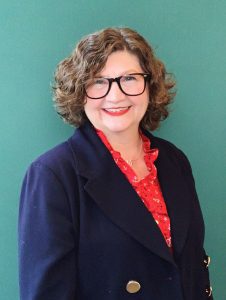 Melissa Farmer Richards is a higher education leader, author, and communications strategist with over two decades of experience in marketing, branding, and enrollment. She has held senior leadership roles at institutions including Hamilton College, Sweet Briar College, and St. Lawrence University, where she specialized in building high-performing teams and driving institutional growth. Melissa is the author of The 30-60-90 Day Handbook, a practical guide for communications and marketing leaders in higher ed. She is known for her empathetic leadership style, expertise in strategic storytelling, and passion for developing future leaders.
Melissa Farmer Richards is a higher education leader, author, and communications strategist with over two decades of experience in marketing, branding, and enrollment. She has held senior leadership roles at institutions including Hamilton College, Sweet Briar College, and St. Lawrence University, where she specialized in building high-performing teams and driving institutional growth. Melissa is the author of The 30-60-90 Day Handbook, a practical guide for communications and marketing leaders in higher ed. She is known for her empathetic leadership style, expertise in strategic storytelling, and passion for developing future leaders.
As leaders, we shouldn't know everything. We should be smart enough to hire people who bring different skill sets to the table. And we have to be okay to say that we're still learning on the job. That's how you earn respect and credibility when you're honest about what you know and what you don't know.
Melissa Richards
More great podcast episodes.
Season 6 | Episode 18
That’s a Wrap!
Season 6 | Episode 17
Work-Life Integration
Season 6 | Episode 16
Laughing it Off
Season 6 | Episode 15
Corporate Volunteerism in Action
Season 6 | Episode 14
Collaborative Play at Work
Season 6 | Episode 13
The Science of Supportive Workplaces
Season 6 | Episode 12
The Power of Being Present
Season 6 | Episode 11
The Age Advantage
